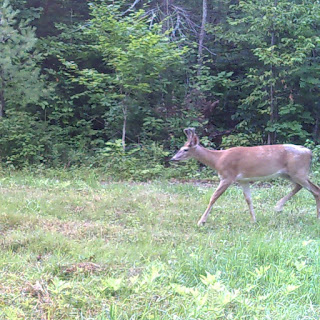I just hit a deer, do you want it?
My neighbor sent me this text during her morning commute to work. Had there been room in my freezer, I might have taken her up on it. I had done it before when I watched another driver hit another doe within 50 feet of where my neighbor was. It was the third deer hit that week in the same stretch of road. Why? A landowner is feeding them.
A few years ago, I spoke with Maine IF&W’s then deer biologist about the impacts of feeding deer. We talked about the risk of diseases like Chronic Wasting Disease getting into the herd and spreading so rapidly, because of the unnaturally large population being pulled into a small area. We talked about the biological make up of a deer’s stomach and how the food they are being fed (grain) is not a natural food for them, especially during the winter months. We talked about the increase in predators in those areas because of the increase populations and of course, we talked about more deer being hit.
Maine IF&W has a four-page document called, “Living on the Edge: Winter Feeding of Deer: what you should know.” It lists many more examples of adverse impacts of feeding deer including disruption of natural deer migration, malnutrition and more aggressive deer preventing vulnerable deer (like fawns) from getting enough food to survive. And just because you don’t see these behaviors while looking out your window, does not mean that they are not happening.
It infuriates me every time somebody shares the live video of the ‘food pantry’ that we have in the state. All of those deer have been conditioned to go there in order to get fed in the winter months. They are now dependent on non-natural food and if the feeding ever ends, it will be years before deer revert back to a natural feeding pattern and move to naturally created winter yards.
If the genuine purpose behind these feeding operations is to “help” the deer during the winter months, then there should be a way for everyone to come to the table and create a plan to end the feeding and help deer return to their natural feeding and wintering patterns. We trust the biologists to do their jobs and work to create a healthy animal population. We need to listen and trust them when they say not to .feed deer
Otherwise, we will end up with more deer suffering and unable to
survive in their natural environment. And the last thing I want is to watch
more deer suffer on the side of the road as they slowly die from their
injuries.

Comments
Post a Comment